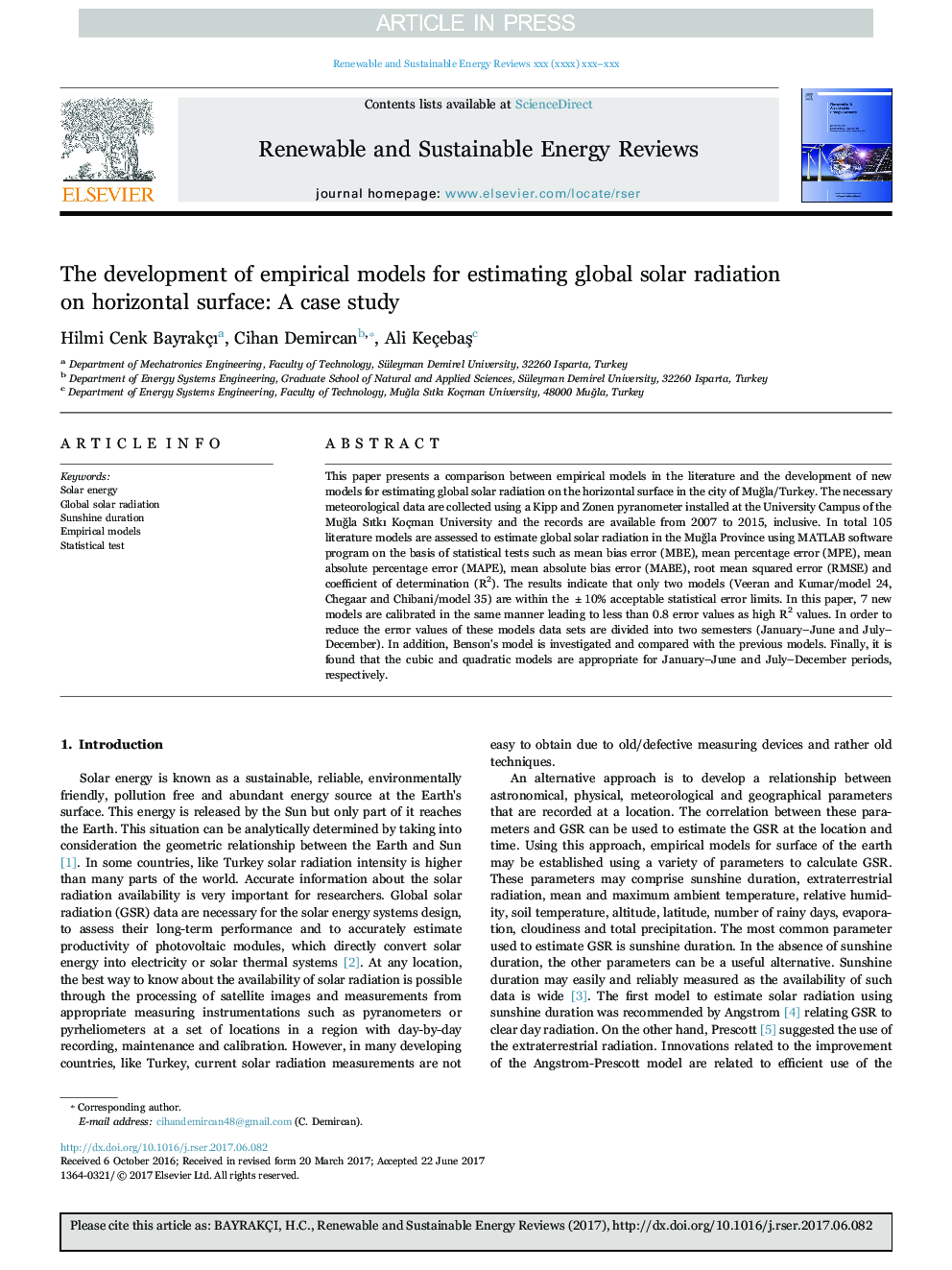| Article ID | Journal | Published Year | Pages | File Type |
|---|---|---|---|---|
| 8112454 | Renewable and Sustainable Energy Reviews | 2018 | 12 Pages |
Abstract
This paper presents a comparison between empirical models in the literature and the development of new models for estimating global solar radiation on the horizontal surface in the city of MuÄla/Turkey. The necessary meteorological data are collected using a Kipp and Zonen pyranometer installed at the University Campus of the MuÄla Sıtkı Koçman University and the records are available from 2007 to 2015, inclusive. In total 105 literature models are assessed to estimate global solar radiation in the MuÄla Province using MATLAB software program on the basis of statistical tests such as mean bias error (MBE), mean percentage error (MPE), mean absolute percentage error (MAPE), mean absolute bias error (MABE), root mean squared error (RMSE) and coefficient of determination (R2). The results indicate that only two models (Veeran and Kumar/model 24, Chegaar and Chibani/model 35) are within the ±10% acceptable statistical error limits. In this paper, 7 new models are calibrated in the same manner leading to less than 0.8 error values as high R2 values. In order to reduce the error values of these models data sets are divided into two semesters (January-June and July-December). In addition, Benson's model is investigated and compared with the previous models. Finally, it is found that the cubic and quadratic models are appropriate for January-June and July-December periods, respectively.
Related Topics
Physical Sciences and Engineering
Energy
Renewable Energy, Sustainability and the Environment
Authors
Hilmi Cenk Bayrakçı, Cihan Demircan, Ali KeçebaÅ,
